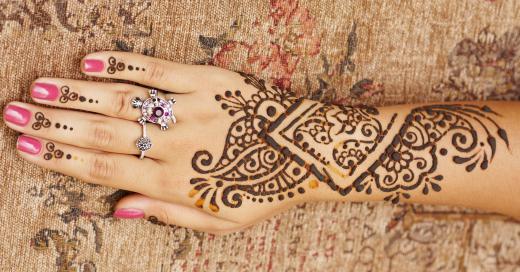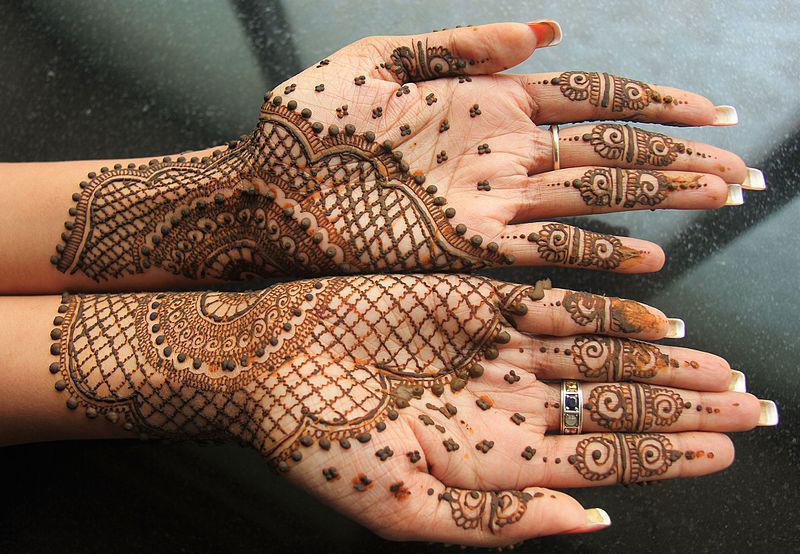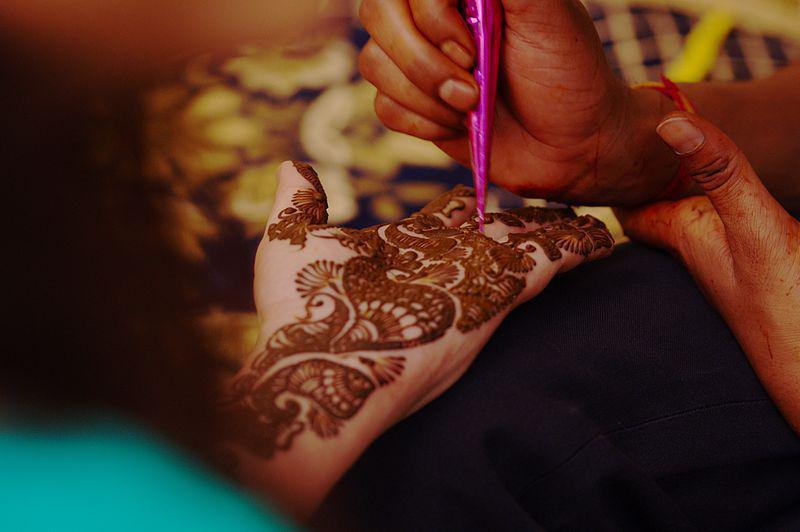At BeautyAnswered, we're committed to delivering accurate, trustworthy information. Our expert-authored content is rigorously fact-checked and sourced from credible authorities. Discover how we uphold the highest standards in providing you with reliable knowledge.
How Do I Make Henna?
When you make henna, you typically have several places to start. You may simply want to make henna paste with purchased powder. Some people may prefer starting from scratch by growing henna plants from seed. Growing your own plants means you can make henna from leaves you've harvested and dried yourself. The second method is usually a sure way to get fresh, chemical-free henna powder, but the first method may be less hassle.
Those who want to make henna from scratch, meaning starting with planting henna seeds, should note that henna plants must typically be houseplants if the artist is not living in India; very hot, humid climates are essential for henna plants to survive. Once planted in the proper conditions, the plants usually thrive without much help. All that's needed are three or four henna seeds pushed into moist, very rich soil.

Misting the soil daily and placing it in a warm room under a plastic greenhouse cone should provide good growing conditions. Greenhouse cones — clear plastic cones with a small hole at the tip — can be used to hold in warmth and moisture. When the henna plant has sprouted about three dozen large leaves, the henna artist may harvest about a third of these. Thick, large, dark green leaves generally work best when you make henna powder.

To dry henna leaves, simply lay them between paper towels and set them in a warm, dry place for about three weeks. The leaves should be pale green and very brittle when they're fully dry. The artist may then grind the leaves in a food processor, nut grinder, or with a mortar and pestle. If none of these are available, the artist may crumble them by hand, then crush the flakes into a fine powder with the tip of a wooden spoon. The powder should look like a mix between flour and sand.

Lemon juice is the first ingredient that goes into both homemade and commercial henna powder to make henna paste. It is followed closely by lavender and bergamot essential oils. The artist should mix the paste with a wooden or plastic spoon in a wooden or ceramic bowl, using enough lemon juice that the henna powder forms a thick, malleable paste. About 10 drops each of lavender and bergamot oils not only help the henna smell good, they also help the lemon juice pull dye from the henna, making tattoos darker.

Once mixed, the henna paste must be covered with plastic wrap and allowed to rest for 12 to 24 hours. This resting time allows the henna powder to oxidize and create the dark, reddish-orange dye traditional to henna tattoos. After oxidation, the artist may apply the henna to his or her skin, hair, or even clothing to create natural henna art.
AS FEATURED ON:
AS FEATURED ON:















Discussion Comments
@fBoyle-- Yes, there are ways to make the henna color come out darker. Prepare your henna paste a few days early. Put it in a plastic container and in the fridge. It becomes darker as it sits in the fridge.
Before applying the henna, squeeze some lemon and add some sugar in it. Dissolve the sugar and keep a few cotton balls aside. After applying the henna, as it becomes dry, apply the sugary lemon juice mixture on the design with the cotton ball. This keeps the henna moist so that it keeps infusing color into skin. Otherwise, the henna will completely dry and start falling off.
Henna should be kept on skin ideally all day or overnight. A plastic bag can be worn over it before sleeping to avoid a mess. After removing the henna in the morning, dab some almond oil or other oil on it. This will also keep the color for longer.
@literally45-- Is there a way to make the henna color come out darker? I think that my henna powder is fresh and I have done as you said. But the color comes out an orange color. It's never dark red as I want it to be.
I agree that finding fresh henna powder can be a challenge, but I don't think that most people are going to bother growing their own henna plant to make it.
In my experience, the henna powders imported from India and the Middle East are fairly fresh. Of course, it's best to check with the seller and manufacturer before purchasing.
Once the powder is purchased though, the rest is a piece of cake. The powder has to be mixed with water to make a paste. It should not be watery and it should not be too thick, especially if a cone is going to be used to make intricate designs.
Post your comments